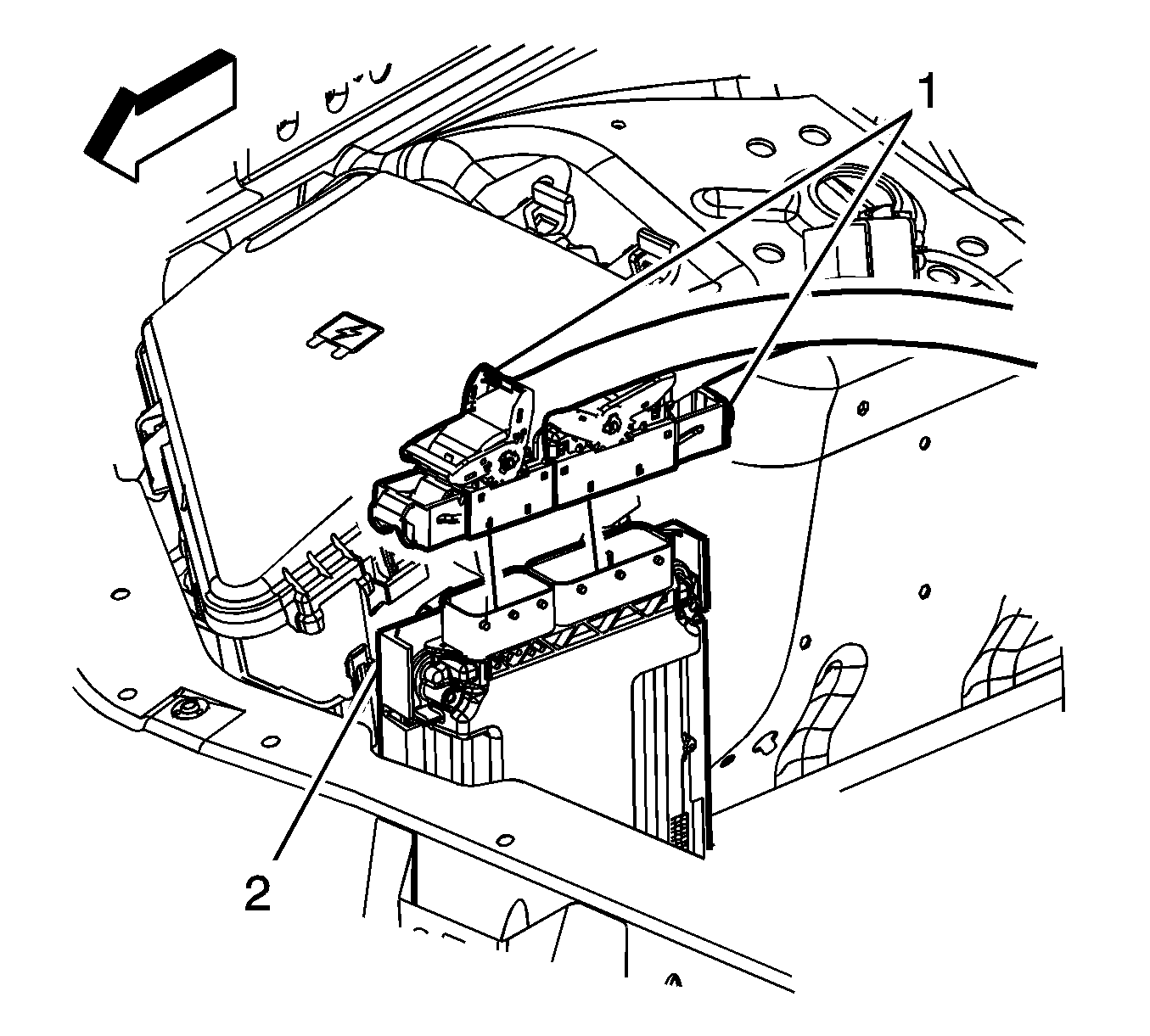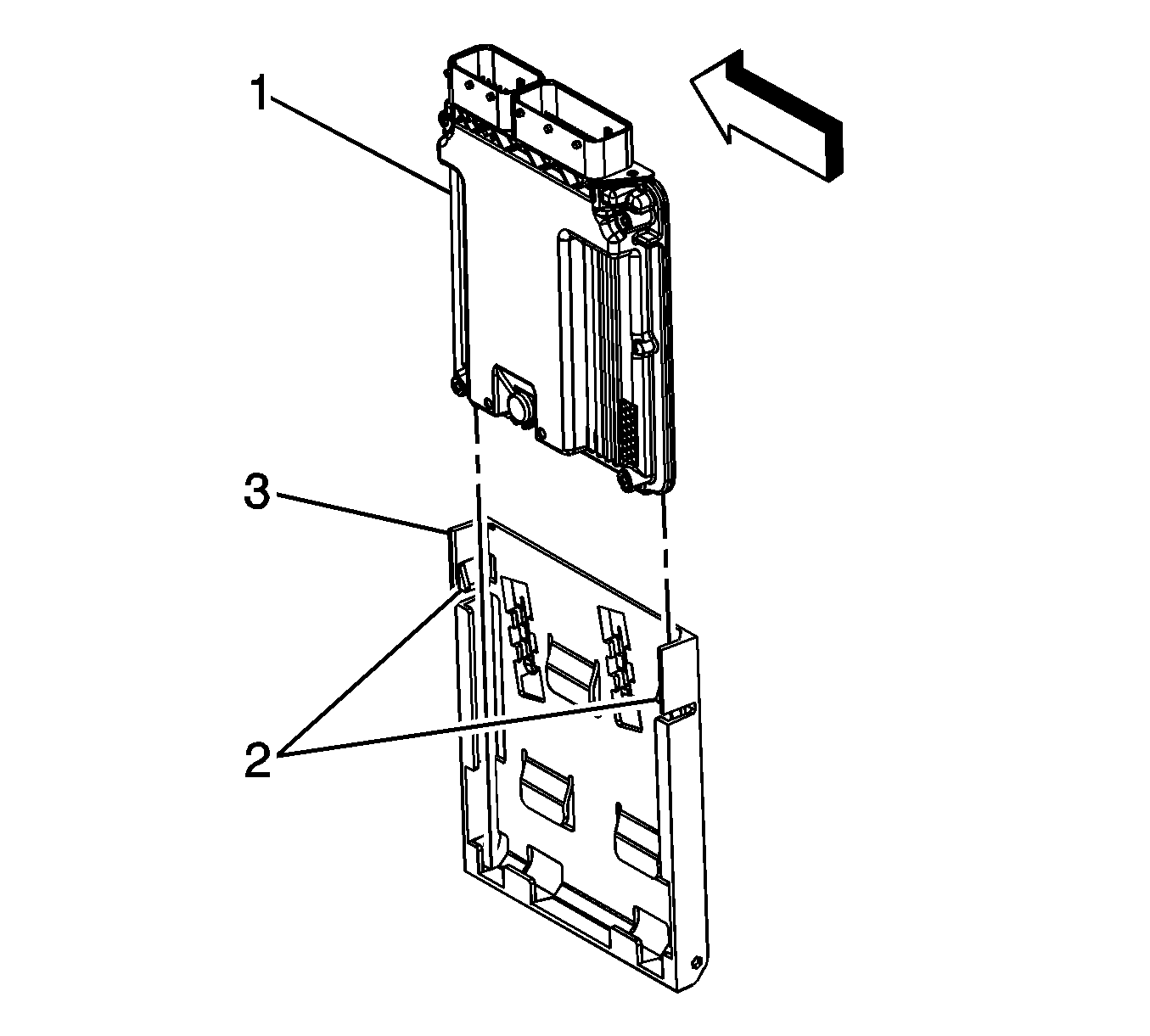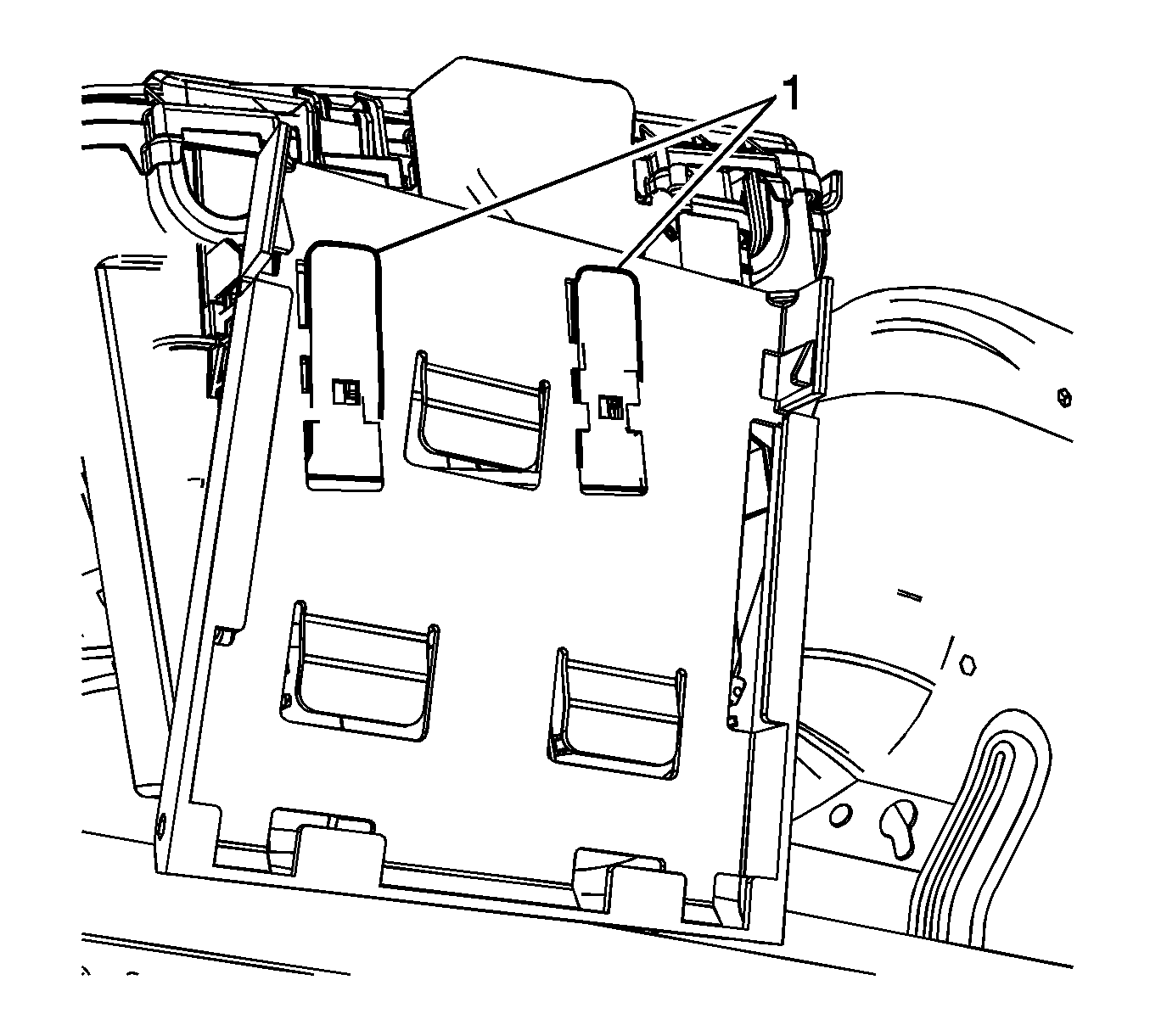Notice:
• Turn the ignition OFF when installing or removing the control module connectors and disconnecting or reconnecting the power to the control module (battery cable, powertrain control module (PCM)/engine control module (ECM)/transaxle control module
(TCM) pigtail, control module fuse, jumper cables, etc.) in order to prevent internal control module damage. • Control module damage may result when the metal case contacts battery voltage. DO NOT contact the control module metal case with battery voltage when servicing a control module, using battery booster cables, or when charging the vehicle battery. • In order to prevent any possible electrostatic discharge damage to the control module, do no touch the connector pins or the soldered components on the circuit board. • Remove any debris from around the control module connector surfaces before servicing the control module. Inspect the control module connector gaskets when diagnosing or replacing the control module. Ensure that the gaskets are installed correctly.
The gaskets prevent contaminant intrusion into the control module. • The replacement control module must be programmed.
Important: It is necessary to record the remaining engine oil life. If the replacement module is not programed with the remaining engine oil life, the engine oil life will default to 100 percent. If the replacement module is not programmed with the remaining engine oil life, the engine oil will need to be changed at 5000 km (3,000 mi) from the last engine oil change.
Important: It is necessary to record the remaining automatic transmission fluid life. If the replacement module is not programed with the remaining automatic transmission fluid life, the automatic transmission fluid life will default to 100 percent. If the replacement module is not programmed with the remaining automatic transmission fluid life, the automatic transmission fluid will need to be changed at 83000 km (50,000 mi) from the last automatic transmission fluid change.
Removal Procedure
- Using a scan tool, retrieve the percentage of remaining engine oil and automatic transmission fluid life. Record the remaining engine oil and automatic transmission fluid life.
- Disconnect the negative battery cable. Refer to Battery Negative Cable Disconnection and Connection.
- Unlock and disconnect the engine wiring harness electrical connectors (1) from the ECM (2).
- Use the tabs (3) in order to disengage the retainers (2) on the ECM bracket from the ECM (1) and remove the ECM.
- If replacing the ECM bracket perform the following steps, otherwise proceed to step 4 in the installation procedure.
- Using a small flat-bladed tool, depress the locking tabs (1) on the ECM bracket.
- Slide up and remove the ECM bracket (1).

Notice: In order to prevent any possible electrostatic discharge damage to the ECM, do not touch the connector pins.



Installation Procedure
- If replacing the ECM bracket perform the following steps, other wise proceed to step 4.
- Slide down and install the ECM bracket (1).
- Ensure that the ECM bracket engages the locking tabs (1).
- Slide the ECM (1) into the ECM bracket, ensure that the ECM engages the bracket retainers (2).
- Connect and lock the engine wiring harness electrical connectors (1) to the ECM (2).
- Connect the negative battery cable. Refer to Battery Negative Cable Disconnection and Connection.
- Program the ECM, if required. Refer to Control Module References.
- Turn OFF the ignition for a least 5 seconds after the programming event is complete.




Notice: In order to prevent any possible electrostatic discharge damage to the ECM, do not touch the connector pins.
